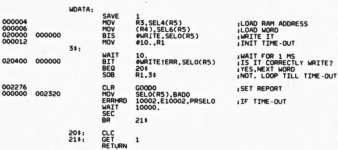BitWiz
Experienced Member
I haven't seen many affordable scanners that have a higher resolution than 9600 DPI.
From your numbers, a 9600 DPI scanner might work. I would set the scanner to black and white mode and low contrast (to remove some of the noise).
From your numbers, a 9600 DPI scanner might work. I would set the scanner to black and white mode and low contrast (to remove some of the noise).





